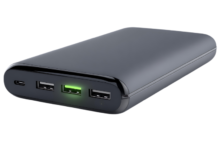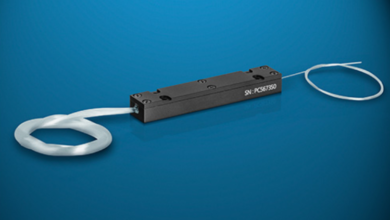Smart Office: A Technological Revolution in Workplace Productivity

In an era where technology reshapes the way we live and work, the concept of the smart office is quickly transitioning from a futuristic idea to an everyday reality.
A smart office blends intelligent design, cutting-edge technologies, and data-driven systems to enhance employee performance, reduce operational inefficiencies, and create a more adaptive work environment. This article explores what makes a smart office truly smart, its core components, the benefits it offers, and how organizations of all sizes can implement smart solutions to elevate their workplace experience.
What Is a Smart Office?
A smart office is a workspace enhanced by digital technologies and connected devices that automate processes, gather insights, and support seamless interactions among employees, systems, and infrastructure. It goes beyond just installing new tech; it’s about creating an intelligent ecosystem that promotes innovation, flexibility, and efficiency.
Smart offices typically integrate tools such as:
- Internet of Things (IoT) sensors and devices
- Cloud-based collaboration platforms
- Artificial intelligence (AI) and machine learning
- Automated lighting and HVAC systems
- Smart security and access control
- Digital resource booking and space management
This intelligent setup not only transforms physical spaces but also enhances organizational culture and employee engagement.
See also: Physical Therapy Techniques That Boost Pain Management
Why Smart Offices Matter Today
The need for smart offices has accelerated in recent years due to a mix of technological evolution and cultural shifts in the workplace. Here are some of the major driving forces:
1. Remote and Hybrid Work
Post-pandemic, hybrid work models have become the norm smart office support seamless transitions between home and office environments, offering features like hot-desking, digital check-ins, and cloud-based work platforms.
2. Employee Expectations
Modern employees expect tech-enabled environments that support productivity and well-being. A smart office responds to individual needs, from temperature control to collaboration tools.
3. Operational Efficiency
Automation and smart management systems reduce unnecessary energy use, streamline meeting room scheduling, and optimize space usage—all of which reduce costs and enhance productivity.
Core Features of a Smart Office
The backbone of a smart office lies in its integrated systems. Below are the essential components that bring a smart workplace to life:
📡 IoT and Smart Sensors
From motion detectors to temperature monitors, IoT devices collect and share real-time data. These insights help businesses manage energy, optimize space, and maintain comfort without manual intervention.
☁️ Cloud Infrastructure
It promotes mobility, scalability, and secure data storage—perfect for remote collaboration.
🧠 Artificial Intelligence
AI can automate repetitive tasks, analyze employee productivity patterns, and predict maintenance needs. Voice assistants like Alexa for Business or Google Assistant also streamline basic office functions.
Benefits of a Smart Office
Businesses that adopt smart office solutions stand to gain significant competitive advantages. Here are some of the key benefits:
1. Enhanced Productivity
Smart tools eliminate mundane tasks and reduce interruptions. Employees can focus more on strategic initiatives and collaboration, while the environment adapts to their needs.
2. Optimized Space Utilization
Sensor data helps companies redesign their office layout based on actual usage. This can eliminate underutilized areas and allow for flexible arrangements such as hot-desking and shared meeting rooms.
3. Cost Reduction
Automated systems reduce energy consumption, lower maintenance expenses, and minimize resource waste—translating into significant savings over time.
Real-World Examples of Smart Office Implementation
Let’s look at how different organizations are applying smart office principles to transform their spaces:
🌍 Global Tech Giants
Companies like Microsoft and Cisco use occupancy sensors, AI scheduling, and climate control to make their offices more responsive and efficient.
🏢 Real Estate Firms
Commercial buildings now market smart office features to attract high-value tenants, including automated lighting, air quality monitoring, and tenant apps for facility management.
🧪 Research Institutions
Universities and labs use smart systems to manage lab environments, ensure secure access, and track equipment usage.
Overcoming Challenges in Smart Office Integration
While the advantages are many, implementing a smart office comes with its own set of challenges:
- Upfront Costs: Initial investment in hardware and software can be high, although long-term ROI is promising.
- Integration Issues: Ensuring all systems work cohesively requires careful planning and robust IT infrastructure.
- Data Security Risks: With multiple connected devices, cybersecurity must be a top priority.
- Change Management: Employees may be hesitant to adopt new systems; adequate training and support are essential.
Future Trends in Smart Office Design
The future of the smart office is being shaped by advancements in AI, connectivity, and personalization. Here’s what we can expect:
🌐 5G Integration
Faster, low-latency networks will enable real-time collaboration tools, cloud computing, and smart systems to function more smoothly than ever.
👓 Augmented and Virtual Reality
AR and VR tools will allow for immersive collaboration experiences, virtual walkthroughs of projects, and better training environments.
💬 Predictive AI
AI will move from task automation to predictive modeling—identifying bottlenecks, flagging burnout risks, and improving workflows proactively.
🛠️ Modular Office Design
Smart furniture and moveable walls will adapt based on changing team sizes and project needs, supported by digital systems that track layout effectiveness.
Conclusion
The smart office is not a passing trend—it’s a strategic evolution of the modern workplace. As the line between technology and environment continues to blur, smart offices are becoming essential hubs of innovation, collaboration, and sustainability.
By adopting smart office technologies, companies not only streamline their operations but also position themselves as forward-thinking, employee-first organizations ready for the future of work.






